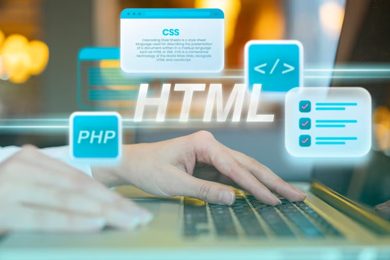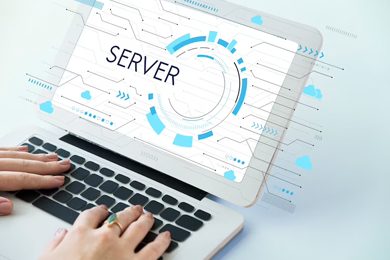This plan includes
- Limited free courses access
- Play & Pause Course Videos
- Video Recorded Lectures
- Learn on Mobile/PC/Tablet
- Quizzes and Real Projects
- Lifetime Course Certificate
- Email & Chat Support
What you'll learn?
- Understand the fundamental concepts of databases, data models, and their importance.
- Design and create relational databases using Entity-Relationship Diagrams (ERD).
- Normalize and optimize database structures to ensure data integrity and performance.
- Write SQL queries to retrieve, update, and manipulate data in a database.
- Apply database design principles to real-world scenarios and projects.
Course Overview
Pre-requisites
- No experience required
- A Laptop/desktop with at-least 8GBs of RAM and 10GB free hard disks space
Target Audience
- People considering a career change into a field that requires database knowledge and skills
- Undergraduate or graduate students majoring in computer science, software engineering, or related fields.
- IT professionals looking to expand their knowledge and skills in database design
- Individuals working with data analysis or data science who need to understand how databases are structured
- Individuals who have a general interest in data management and want to understand how databases work
- Business analysts who want to understand how data is stored and retrieved for reporting and decision-making purposes.
Curriculum 53 Lectures 02:59:51
Section 1 : Introduction
- Lecture 2 :
- Lecture 2 Course Objectives
- Lecture 3 :
- Course Related Files & Resources
Section 2 : Getting Started
- Lecture 1 :
- Lecture 3 Overview
- Lecture 2 :
- Lecture 4. File based system
- Lecture 3 :
- Lecture 5. What is a database
- Lecture 4 :
- Lecture 6. types of databases
- Lecture 5 :
- Lecture 7. Emeging Technologies
- Lecture 6 :
- lecture 8. Summary
Section 3 : Entity Relationship Diagrams (ERD)
- Lecture 1 :
- lecture 9. Overview
- Lecture 2 :
- Lecture 10 Entity Relationship Diagram-1
- Lecture 3 :
- Lecture 11. Conceptual Modelling
- Lecture 4 :
- Lecture 12 - Entities-1
- Lecture 5 :
- Lecture 13 Attributes
- Lecture 6 :
- Lecture 14 Relationships
Section 4 : Relation Modelling
- Lecture 1 :
- Lecture 15 - Relation Model Overview
- Lecture 2 :
- Lecture 16 - Understaing the Relation Model
- Lecture 3 :
- Lecture 17 - ERD to Relational Notation
- Lecture 4 :
- Lecture 18 - ERD to Relational Notation Part 2
- Lecture 5 :
- Lecture 19 Relational Keys
- Lecture 6 :
- Lecture 20 Integrity Rule Keys
Section 5 : Relation Model Normalization
- Lecture 1 :
- Lecture 21 - Overview
- Lecture 2 :
- Lecture 22- What is Normalization
- Lecture 3 :
- Lecture 23 - Normalization First Normal Form 1NF
- Lecture 4 :
- Lecture 24 - Normalization Second Normal Form 2NF
- Lecture 5 :
- Lecture 25 - Normalization Third Normal Form 3NF
- Lecture 6 :
- Lecture 26 Resource
- Lecture 7 :
- Lecture 27 Resource
Section 6 : Physical database design
- Lecture 1 :
- Lecture 28 - Physical Design Overview
- Lecture 2 :
- Lecture 29 - Introduction To SQL
- Lecture 3 :
- Lecture 30 - Types of SQL Statements
- Lecture 4 :
- Lecture 31 Data Types
Section 7 : Database Implementation Environment Setup
- Lecture 1 :
- Lecture 32- Overview
- Lecture 2 :
- Lecture 34 Installing SQL Server Management Studio and Azure Data Studio
- Lecture 3 :
- Lecture 35 - Installing PG Admin for PostgreSQL
- Lecture 4 :
- Lecture 36 - Installing SQL Developer for Oracle
- Lecture 5 :
- Lecture 37 - Installing MySQL Workbench for MySQL
- Lecture 6 :
- Lecture 38 Setting up Cloud Database Instance in AWS
- Lecture 7 :
- Lecture 39 - Setting Local Environment with SQL Server 2022
- Lecture 8 :
- Lecture 40 - Explorting Azure Data Studio
Section 8 : The Data Definition Language
- Lecture 1 :
- Lecture 41 Creating a Database
- Lecture 2 :
- Lecture 42 - Creating Tables
- Lecture 3 :
- Lecture 43 Drop Statement
- Lecture 4 :
- Lecture 44 - Altering objects
Section 9 : Data Manipulation Language
- Lecture 1 :
- Lecture 45 Insert Statement
- Lecture 2 :
- Lecture 46 Select Statement
- Lecture 3 :
- Lecture 48 -Select Statement Pattern Matching
- Lecture 4 :
- Lecture 49 Generated Columns
- Lecture 5 :
- Lecture 50 - Aggregations
- Lecture 6 :
- Lecture 51 Join Statements-1
- Lecture 7 :
- Lecture 52 Update Statement
- Lecture 8 :
- Lecture 53 - Detete Statement
- Lecture 9 :
- Course Resources
Our learners work at
Frequently Asked Questions
How do i access the course after purchase?
It's simple. When you sign up, you'll immediately have unlimited viewing of thousands of expert courses, paths to guide your learning, tools to measure your skills and hands-on resources like exercise files. There’s no limit on what you can learn and you can cancel at any time.Are these video based online self-learning courses?
Yes. All of the courses comes with online video based lectures created by certified instructors. Instructors have crafted these courses with a blend of high quality interactive videos, lectures, quizzes & real world projects to give you an indepth knowledge about the topic.Can i play & pause the course as per my convenience?
Yes absolutely & thats one of the advantage of self-paced courses. You can anytime pause or resume the course & come back & forth from one lecture to another lecture, play the videos mulitple times & so on.How do i contact the instructor for any doubts or questions?
Most of these courses have general questions & answers already covered within the course lectures. However, if you need any further help from the instructor, you can use the inbuilt Chat with Instructor option to send a message to an instructor & they will reply you within 24 hours. You can ask as many questions as you want.Do i need a pc to access the course or can i do it on mobile & tablet as well?
Brilliant question? Isn't it? You can access the courses on any device like PC, Mobile, Tablet & even on a smart tv. For mobile & a tablet you can download the Learnfly android or an iOS app. If mobile app is not available in your country, you can access the course directly by visting our website, its fully mobile friendly.Do i get any certificate for the courses?
Yes. Once you complete any course on our platform along with provided assessments by the instructor, you will be eligble to get certificate of course completion.
For how long can i access my course on the platform?
You require an active subscription to access courses on our platform. If your subscription is active, you can access any course on our platform with no restrictions.Is there any free trial?
Currently, we do not offer any free trial.Can i cancel anytime?
Yes, you can cancel your subscription at any time. Your subscription will auto-renew until you cancel, but why would you want to?
Instructor

1688 Course Views
3 Courses



 Tech & IT
Tech & IT
 Business
Business
 Coding & Developer
Coding & Developer
 Finance & Accounting
Finance & Accounting
 Academics
Academics
 Office Applications
Office Applications
 Art & Design
Art & Design
 Marketing
Marketing
 Health & Wellness
Health & Wellness
 Sounds & Music
Sounds & Music
 Lifestyle
Lifestyle
 Photography
Photography







.jpg?crop=smart&width=600&height=400)









